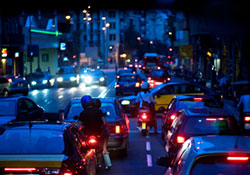WHO night noise guidelines for Europe

iStockphoto
Sleep disturbance is one of the most serious effects of environmental noise, causing both immediate effects and next-day and long-term effects on mental and cardiovascular health.
In western countries, sleep problems are increasingly common. One in five Europeans is regularly exposed to sound levels at night that could significantly damage their health.
Noise limits and country action
WHO/Europe’s guidelines for night noise, published in 2009, provide governments with stronger justifications for regulating exposure to night noise and clear guidance on desirable limits.
According to these guidelines, annual average night exposure should not exceed 40 decibels (dB), corresponding to the sound from a quiet street in a residential area. Persons exposed to higher levels over the year can suffer mild health effects, such as sleep disturbance and insomnia. Long-term average exposure to levels above 55 dB, similar to the noise from a busy street, can trigger elevated blood pressure and heart attacks.
By recommending that countries introduce limits on night noise, the guidelines complement the 2002 European Union Directive on Environmental Noise, which requires countries to map hotspots and reduce exposure, but does not set limit values.
The European Commission (EC) was a key partner and funded the project to develop the guidelines through its Directorate-General for Health and Consumers.



